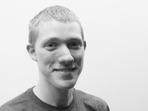However, new technologies are being developed that could possibly put an end to 3D glasses. One of these technologies is lenticular lenses. Lenticular lenses are small lenses located on top of the display. These lenses display two sets of the same image and direct the light emanated from the images to your eyes—one image per eye. Finally, your brain stitches the images together and you perceive a 3D image.
Although the technology effectively gets rid of the need for 3D glasses, there are several drawbacks. First, as is the case with today’s 3D, the images need to be specially created to be compatible with the displays. Creators of the film need to interlace the two different sets of images together, or the effect will not work properly, as viewers would simply see a blurry dual image instead of one three dimensional image. A larger issue with the technology is that it would require a viewer to sit in a “sweet spot” while watching the film. If the viewer moved just a little to the left or right of the screen, the image would start to blur and the 3D effect would be lost. Although this seems like a major issue with the technology, a probable solution would be a camera that tracks the viewer’s position (hopefully enabling multiple viewers), allowing them to be relatively mobile during the movie (Strickland).
What do you think? Will lenticular lenses or a similar technology replace our 3D glasses? Do you think 3D is a concept worth debating at all? Post your thoughts in the comments below.
WORKS CITED
Strickland, Jonathan. "How 3-D TV Works." How Stuff Works. Web. 29 Oct. 2015.
<http://electronics.howstuffworks.com/3d-tv5.htm>.




 RSS Feed
RSS Feed
